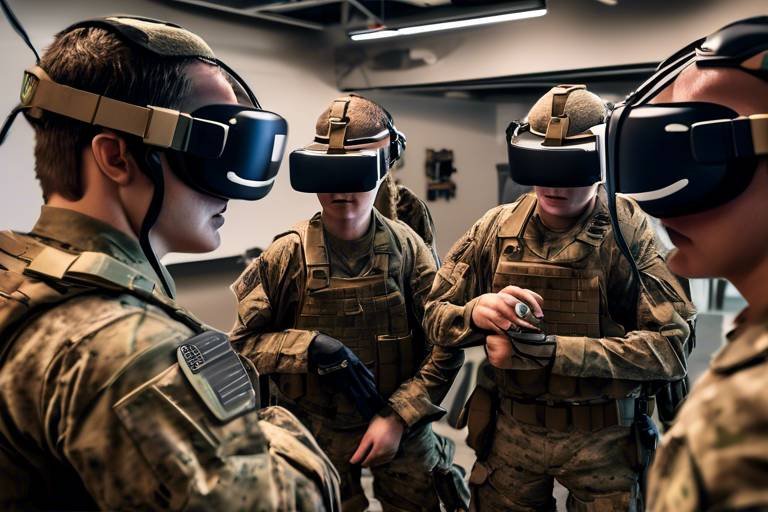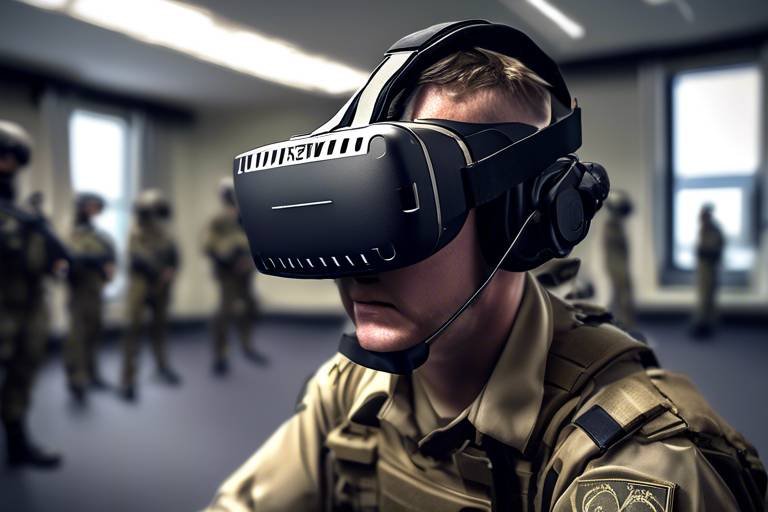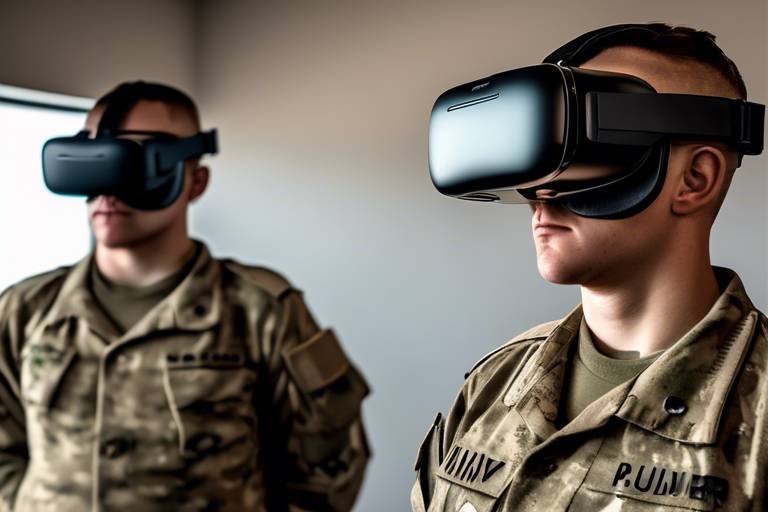The Role of Virtual Reality in Enhancing Teamwork in Combat Scenarios
In today's fast-paced and ever-evolving military landscape, the need for effective teamwork in combat scenarios has never been more critical. The stakes are high, and every decision can mean the difference between success and failure. This is where Virtual Reality (VR) steps in, revolutionizing the way military teams train and collaborate. Imagine stepping into a lifelike simulation where you can practice strategies, communicate under pressure, and build trust with your team—without the real-world risks. This article delves into how VR technology enhances collaboration and efficiency among teams in high-pressure combat situations, showcasing its myriad benefits, diverse applications, and exciting future potential.
Virtual reality is not just a buzzword; it’s an immersive technology that creates a simulated environment, allowing users to engage and interact within a 3D space. Think of it as a digital playground where soldiers can hone their skills in a safe yet realistic setting. This understanding of VR’s mechanics is crucial for appreciating its applications in teamwork and combat training. By wearing VR headsets and using motion controllers, users can experience a sense of presence that traditional training methods simply cannot replicate. It’s like stepping into a video game, but the stakes are real, and the lessons learned can save lives.
The advantages of incorporating VR into combat training are numerous and significant. First and foremost, VR provides a risk-free environment for practice, allowing soldiers to engage in realistic scenarios without the dangers associated with live training exercises. This not only enhances situational awareness but also allows teams to simulate complex situations that improve decision-making and teamwork. For instance, soldiers can practice navigating through urban environments, managing hostage situations, or coordinating air support—all from the safety of a training facility.
One of the standout benefits of virtual reality training is its ability to foster better communication skills among team members. By simulating real-time interactions, VR helps soldiers develop effective strategies for conveying critical information under pressure. Imagine being in a high-stress situation where every second counts. VR training prepares teams for these moments by placing them in lifelike scenarios that require quick thinking and clear communication.
By creating lifelike combat scenarios, VR allows teams to practice communication in settings that closely mimic real-world challenges. This realistic simulation enhances their ability to respond to dynamic situations effectively. For example, during a VR training session, a team might have to coordinate a rescue operation while under fire, forcing them to communicate clearly and efficiently. This experience not only builds their skills but also boosts their confidence in their ability to work together under pressure.
Another critical aspect of VR systems is their ability to provide immediate feedback on team interactions. After each training session, participants can analyze their performance, identifying strengths and areas for improvement. This feedback loop is invaluable, as it allows soldiers to refine their communication techniques and strategies in future training sessions. It’s like having a coach who guides you through every step, helping you to become a better team player.
Trust and cohesion are the bedrock of any successful team, especially in combat scenarios. VR can facilitate trust-building exercises that strengthen relationships and improve overall team dynamics. By engaging in shared experiences, team members learn to rely on one another, fostering a sense of unity that is essential for effective collaboration. When soldiers trust each other, they can focus on the mission at hand, rather than worrying about their teammates’ abilities.
The military is increasingly incorporating VR into training exercises, enabling soldiers to experience and prepare for various combat situations in a controlled, safe environment. This integration not only enhances training efficiency but also ensures that soldiers are better prepared for real-world challenges.
VR can simulate joint operations between different military branches, enhancing understanding and cooperation among diverse teams. This is crucial for successful missions, as it allows soldiers from various backgrounds to work together seamlessly. Imagine a scenario where Army, Navy, and Air Force personnel collaborate in a VR environment, practicing their roles and responsibilities in a multi-faceted operation.
Using VR for after-action reviews allows teams to revisit scenarios, analyze decisions made during training, and identify areas for improvement. This fosters a culture of continuous learning, ensuring that soldiers are always evolving and adapting to new challenges. It’s like watching game tape after a football match—reviewing what went right and what could be improved helps teams grow stronger together.
As technology advances, the future of VR in combat training looks promising. Innovations in VR could further enhance teamwork and operational efficiency in military contexts. Imagine AI-driven simulations that adapt in real-time to a team's performance, creating unique challenges tailored to their skill level. The potential developments are exciting and could redefine how soldiers prepare for combat, ensuring they are ready for anything the battlefield throws their way.
- What is Virtual Reality? - Virtual Reality is an immersive technology that simulates real-world environments, allowing users to interact within a 3D space.
- How does VR improve teamwork in combat training? - VR enhances communication, builds trust, and allows for realistic scenario simulations that prepare teams for high-pressure situations.
- What are the benefits of using VR in military exercises? - Benefits include risk-free training environments, improved situational awareness, and enhanced collaboration among diverse teams.
- What does the future hold for VR in combat training? - The future may include AI-driven simulations and more advanced technologies that further enhance training effectiveness and team dynamics.

Understanding Virtual Reality
Virtual reality (VR) is not just a buzzword; it's a transformative technology that immerses users in a simulated environment, allowing them to experience and interact with a 3D space as if they were truly there. Imagine stepping into a world where you can fly through the skies, explore distant planets, or engage in combat scenarios without ever leaving your room. This is the magic of VR, where the boundaries of reality blur, and the possibilities are endless.
At its core, VR technology uses a combination of hardware and software to create a sense of presence in a virtual world. Users typically wear a headset that covers their eyes and ears, shutting out the real world and replacing it with a digital landscape. Motion sensors track the user's movements, allowing them to look around and interact with objects in the virtual space. It's like stepping into a video game, but with a level of immersion that traditional screens simply can't provide.
Understanding the mechanics of VR is crucial, especially when considering its applications in teamwork and combat training. Here are some key components that make VR effective:
- Visual and Auditory Immersion: High-quality graphics and spatial audio create a lifelike experience, making users feel as if they are truly part of the environment.
- Interactivity: Users can manipulate objects, communicate with avatars, and even engage in combat, all within a safe and controlled setting.
- Real-Time Feedback: VR systems can provide instant feedback on actions and decisions, helping users to learn and adapt quickly.
As we delve deeper into the world of VR, it becomes clear that its potential extends far beyond entertainment. In military training, for instance, the ability to simulate high-pressure combat scenarios can significantly enhance a team's preparedness. By understanding how VR works and its benefits, military personnel can leverage this technology to improve their skills, communication, and overall effectiveness in the field.
In summary, virtual reality is a powerful tool that can revolutionize how teams train and prepare for combat scenarios. By immersing users in realistic environments and providing them with the means to practice and improve their skills, VR stands to enhance teamwork and operational efficiency like never before.
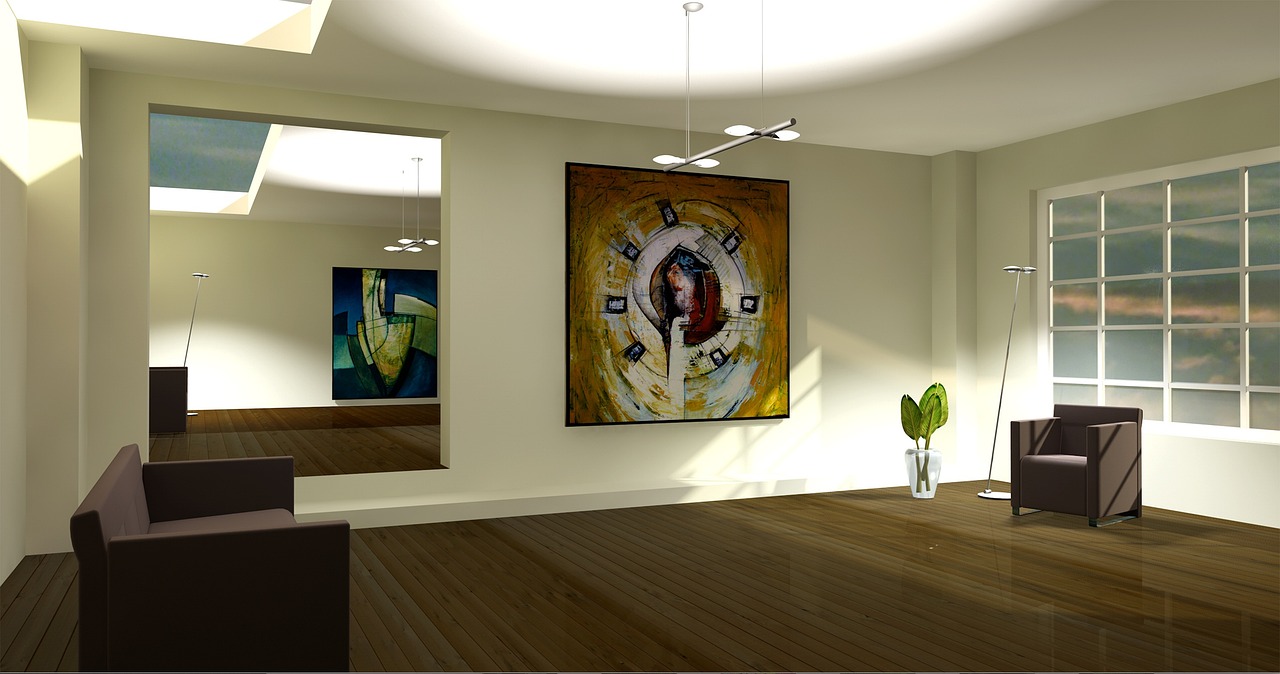
Benefits of VR in Combat Training
When it comes to combat training, the stakes are incredibly high. Soldiers must be prepared for any scenario, and the pressure can be overwhelming. This is where Virtual Reality (VR) steps in as a game-changer. By immersing users in a simulated environment, VR offers a plethora of benefits that traditional training methods simply can't match. Imagine being able to practice combat scenarios without the risk of injury or the stress of real-life consequences. That's the power of VR! It creates a safe space for soldiers to hone their skills, make mistakes, and learn from them without the fear of dire outcomes.
One of the most significant advantages of VR in combat training is the ability to enhance situational awareness. In a real combat situation, being aware of your surroundings can mean the difference between life and death. VR training allows soldiers to experience various environments, from urban landscapes to dense forests, helping them to recognize potential threats and opportunities. This kind of training improves their ability to assess situations quickly and accurately, which is crucial in high-stakes scenarios.
Additionally, VR can simulate complex scenarios that require quick decision-making and effective teamwork. For instance, soldiers can engage in missions that involve multiple units working together, each with their unique roles and responsibilities. This not only fosters a sense of unity among team members but also teaches them how to execute strategies under pressure. By practicing these scenarios repeatedly, soldiers become more adept at communicating and collaborating, which is vital in real combat situations.
Another key benefit is the risk-free environment that VR provides. Training in real-life situations can be dangerous and costly. With VR, teams can engage in realistic combat situations without the physical risks associated with live-fire exercises. This allows for more extensive training sessions, where soldiers can practice various tactics and techniques without the limitations imposed by safety concerns. They can push their boundaries and explore different strategies, leading to a more well-rounded skill set.
Moreover, VR training offers immediate feedback and analysis, which is essential for continuous improvement. After completing a training session, soldiers can review their performance through the VR system, identifying strengths and weaknesses in their approach. This instant feedback loop helps them refine their skills and adapt their strategies, ensuring they are always learning and evolving. Imagine being able to dissect a mission right after it happens, understanding what went well and what could be improved—all in real time!
In summary, the benefits of VR in combat training are vast and varied. From enhancing situational awareness to providing a safe training environment, VR is revolutionizing how we prepare our soldiers for the realities of combat. As technology continues to advance, the potential for VR to improve training outcomes will only grow, leading to more effective and cohesive military teams.
Frequently Asked Questions
- How does VR improve communication among team members? VR training allows for real-time interactions in simulated environments, helping soldiers practice effective communication strategies under pressure.
- Can VR training replace traditional combat training methods? While VR offers many advantages, it is best used as a complementary tool alongside traditional methods to provide a well-rounded training experience.
- What types of scenarios can be simulated using VR? VR can simulate a wide range of environments and situations, from urban warfare to tactical operations in varied terrains, allowing soldiers to prepare for diverse challenges.
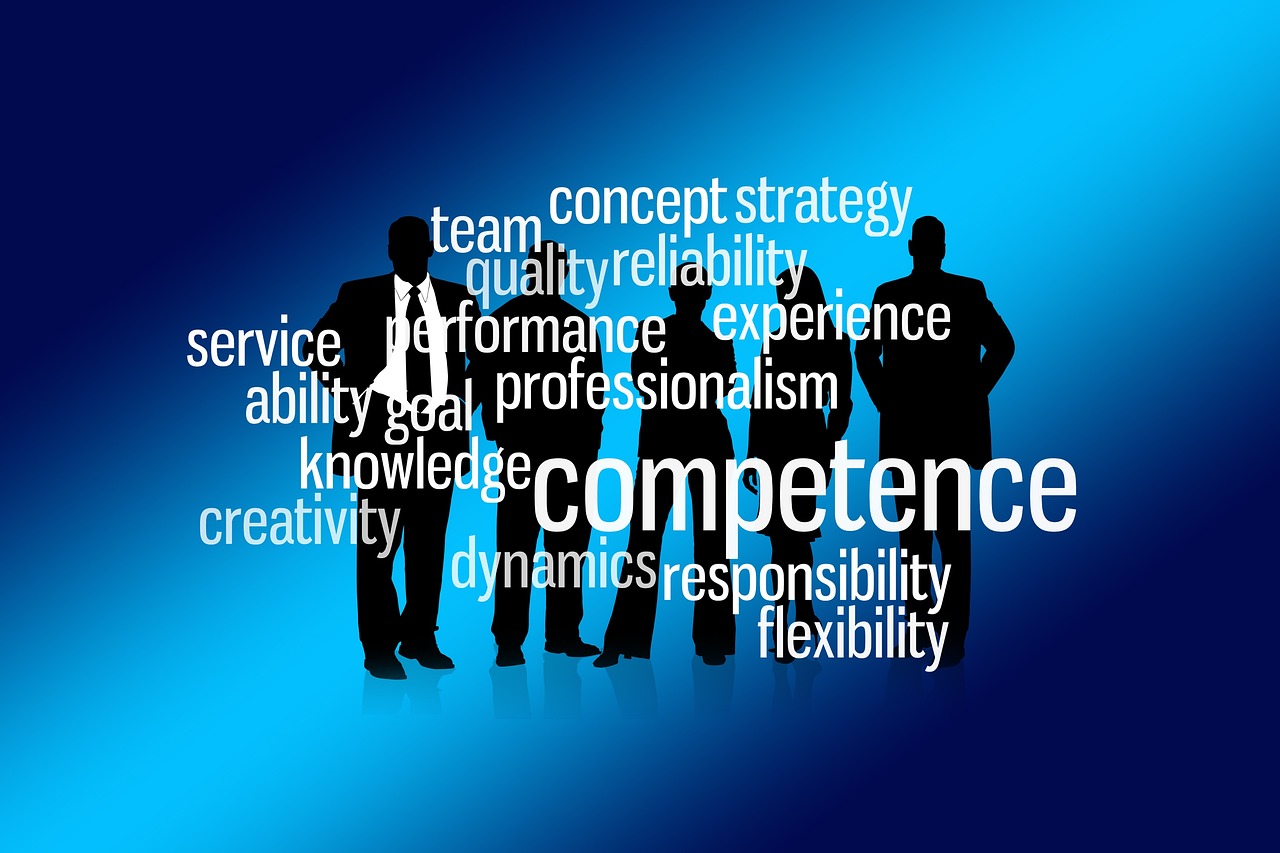
Improved Communication Skills
In the high-stakes world of combat, where every second counts, effective communication can mean the difference between success and failure. Virtual reality (VR) training creates an immersive environment that mimics real-life combat scenarios, allowing team members to practice and refine their communication skills in a safe and controlled setting. Imagine being able to engage in a simulated firefight, where you can test your ability to relay critical information while under pressure. This realistic practice not only helps soldiers develop their verbal communication but also enhances non-verbal cues essential for effective teamwork.
One of the most significant advantages of VR in this context is its ability to simulate real-time interactions. Participants can engage in dynamic dialogues, responding to unexpected changes in the scenario. This is akin to a sports team practicing plays; they learn to anticipate each other's moves, making their communication almost instinctual. In VR, soldiers can practice various communication strategies, learning which methods yield the best results when the heat is on. For example, they might explore:
- Direct verbal commands in high-stress situations
- Body language and gestures when sound communication is compromised
- Using tactical hand signals to convey messages quickly
The feedback mechanism integrated into VR systems is another game-changer. After each training session, participants can review their performances, analyzing how effectively they communicated and identifying areas for improvement. This immediate feedback loop is invaluable, allowing teams to iterate on their communication techniques in a way that traditional training methods simply cannot match. It’s like having a coach who can instantly point out what you did right or wrong, enabling rapid growth and adaptation.
Furthermore, VR can highlight the importance of clarity and brevity in communication. In the chaos of combat, lengthy explanations are impractical. Soldiers learn to convey information succinctly, ensuring their messages are understood quickly. This kind of training translates directly to real-world scenarios, where clear communication can save lives. By honing these skills in a virtual environment, teams can build a solid foundation of trust and reliability, knowing that they can depend on one another to deliver critical information when it matters most.
Ultimately, the emphasis on improved communication skills in VR training fosters a culture of collaboration and mutual respect among team members. It prepares them not just to operate as individuals but as a cohesive unit capable of executing complex missions under pressure. As they practice together, they learn to understand each other's communication styles, creating a synergy that enhances overall performance in real combat situations.

Realistic Scenario Simulation
Imagine stepping into a world where every corner could hide a potential threat, and every decision could mean the difference between success and failure. This is the essence of in virtual reality (VR) training. By immersing soldiers in lifelike combat environments, VR allows teams to practice their skills in situations that closely mirror what they might face in the field. This not only enhances their technical abilities but also sharpens their instincts, making them more effective in real combat scenarios.
One of the most remarkable aspects of VR is its ability to create dynamic environments that change based on the actions of the participants. For example, if a team decides to take a particular route during a mission simulation, the VR system can adapt, introducing new challenges such as unexpected enemy movements or environmental hazards. This level of realism is crucial for preparing soldiers to think on their feet and adapt to rapidly changing situations.
Furthermore, these simulations can be tailored to reflect specific missions or environments that soldiers are likely to encounter. Whether it's urban warfare, mountainous terrain, or desert operations, VR can replicate these conditions with stunning accuracy. This tailored approach ensures that teams are not only familiar with the tactics required but also the unique challenges posed by different environments. Here are some key benefits of realistic scenario simulation:
- Enhanced Decision-Making: Soldiers learn to make quick, informed decisions under pressure.
- Team Coordination: Teams practice working together seamlessly, improving their overall effectiveness.
- Stress Management: By simulating high-pressure situations, soldiers learn to manage stress and maintain focus.
The immersive nature of VR also allows for a level of emotional engagement that traditional training methods cannot match. When soldiers feel like they are truly part of the action, their investment in the training process increases. They are more likely to remember their training and apply it effectively when it counts the most. This emotional connection is vital in combat situations, where the stakes are incredibly high.
In summary, realistic scenario simulation in virtual reality is a game-changer for military training. By providing soldiers with a safe yet challenging environment to practice their skills, VR not only enhances individual capabilities but also fosters stronger teamwork and communication. As technology continues to advance, the potential for even more immersive and effective training scenarios is endless, paving the way for a new era in combat readiness.
- What is virtual reality training? Virtual reality training involves using immersive technology to simulate real-world environments for practice and skill development.
- How does VR improve teamwork in combat? VR enhances teamwork by allowing soldiers to practice communication and coordination in realistic scenarios, fostering trust and cohesion.
- Can VR training be customized for specific missions? Yes, VR training can be tailored to reflect various combat situations and environments, ensuring soldiers are well-prepared for real-life challenges.
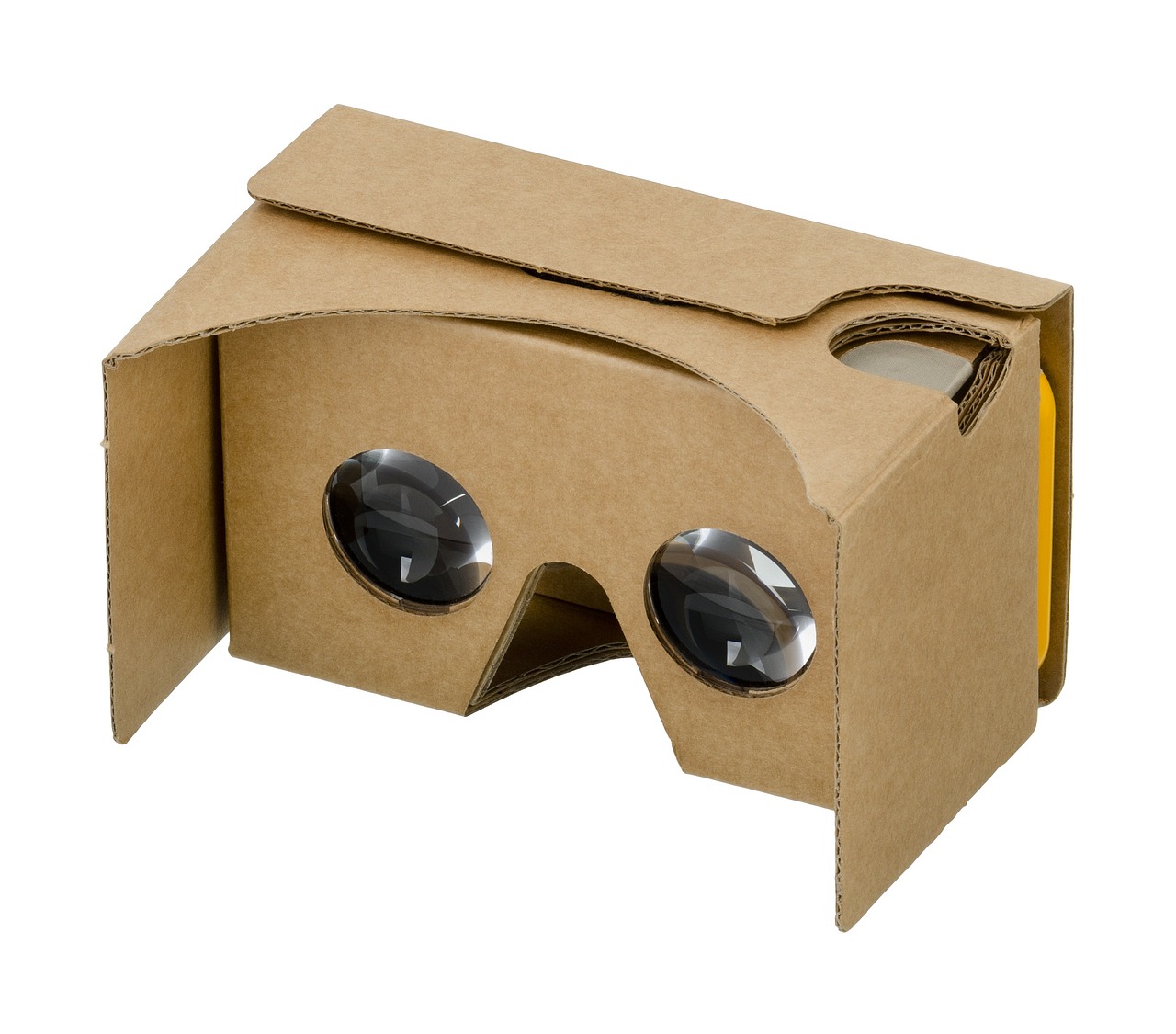
Feedback and Analysis
In the realm of virtual reality training, feedback and analysis play a pivotal role in enhancing the learning experience for military teams. Imagine stepping out of a training session with a clear understanding of what went well and what didn't—this is precisely what VR offers. When teams engage in realistic combat scenarios, they are not just acting out their roles; they are also collecting invaluable data that can be analyzed post-training.
One of the most significant advantages of VR is its ability to provide immediate feedback. After each session, participants can review their performance through detailed playback of their actions. This feature allows soldiers to see firsthand how their decisions impacted the outcome of a mission. For instance, if a team member failed to communicate critical information, the VR system can highlight that moment, prompting a discussion on how to improve communication strategies in future scenarios.
Furthermore, VR systems can track various metrics, such as reaction times, decision-making speed, and even emotional responses during high-stress situations. This data can be compiled into comprehensive reports, allowing teams to delve deeper into their performance. Consider the following example:
| Metric | Analysis |
|---|---|
| Communication Clarity | Team members often misinterpret instructions under pressure; this metric helps identify common misunderstandings. |
| Decision-Making Speed | Analyzing how quickly decisions are made can reveal training gaps and areas needing more focus. |
| Team Cohesion | By evaluating interactions, teams can understand their dynamics better and identify trust issues that may hinder performance. |
By utilizing such detailed feedback mechanisms, teams can foster a culture of continuous improvement. They learn to embrace their mistakes, transforming them into learning opportunities. This shift in mindset is crucial, especially in combat scenarios where the stakes are incredibly high. The ability to dissect each training session not only enhances individual skills but also builds stronger, more cohesive teams ready to tackle real-world challenges.
In conclusion, the integration of feedback and analysis into VR training is a game-changer for military units. It equips them with the tools to reflect on their performance critically, adapt their strategies, and ultimately emerge as more effective collaborators in high-pressure situations.
- What is virtual reality training?
Virtual reality training uses immersive technology to simulate real-world environments for practice and skill development. - How does VR improve teamwork in combat?
VR enhances teamwork by allowing soldiers to practice communication and decision-making in realistic scenarios without the risks associated with real-life training. - Can VR training be customized for different military branches?
Yes, VR training can be tailored to meet the specific needs and protocols of various military branches, ensuring relevance and effectiveness. - What kind of feedback do participants receive?
Participants receive immediate feedback on their performance, including metrics on communication, decision-making speed, and team cohesion.
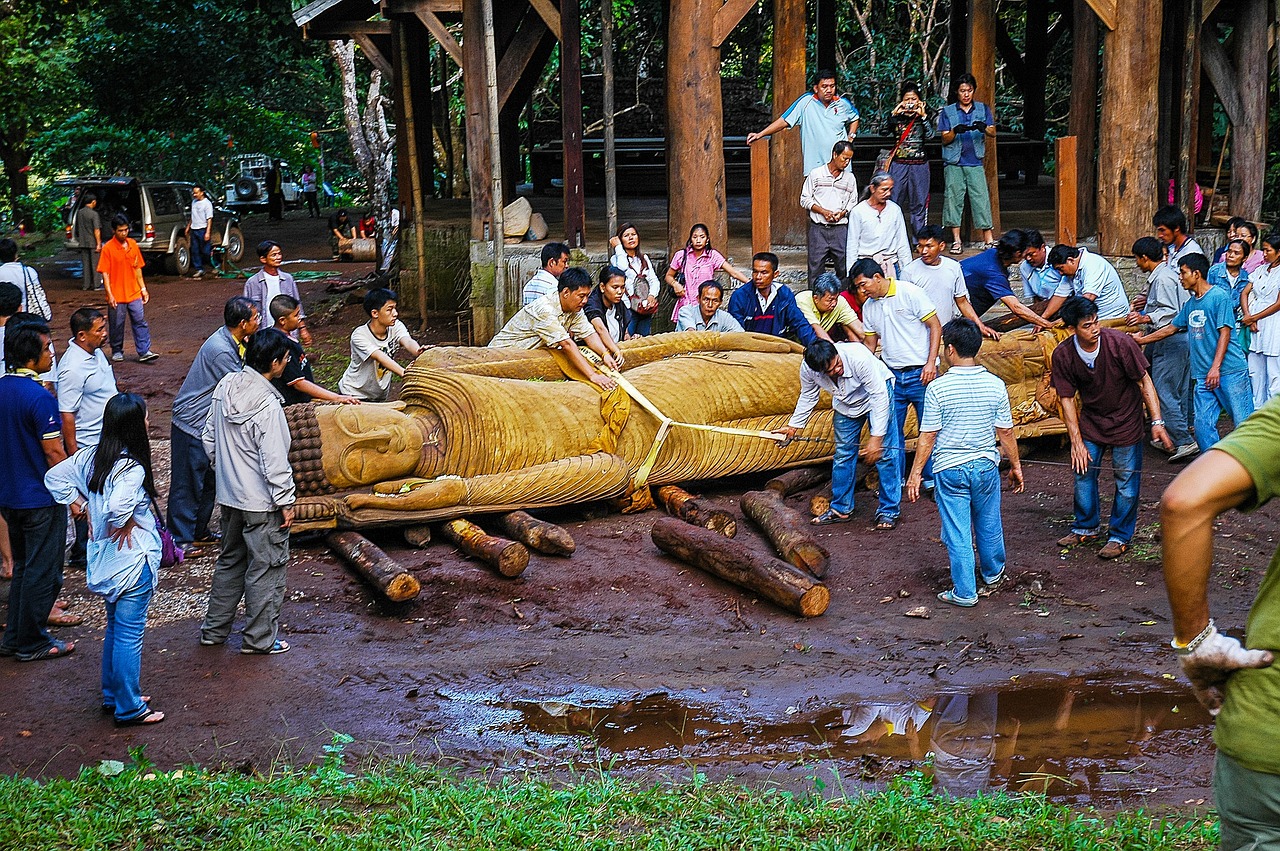
Building Trust and Cohesion
In the high-stakes world of combat, trust and cohesion among team members are not just beneficial; they are essential for survival. Imagine a group of soldiers working together seamlessly, each member anticipating the actions of the others, like a well-rehearsed dance. This kind of synergy is what virtual reality (VR) training aims to foster. By immersing teams in realistic scenarios, VR creates opportunities for soldiers to build relationships and trust in a controlled environment, which can translate into real-world effectiveness.
One of the most significant advantages of VR in this context is its ability to simulate high-pressure situations where communication and teamwork are crucial. When soldiers engage in these virtual exercises, they learn to rely on one another. This reliance is not built overnight; it takes time and repeated interactions within the VR space. Just like in a team sport, where players practice together to develop an instinctive understanding of each other's movements, VR helps soldiers develop a similar rapport.
Furthermore, VR can facilitate trust-building exercises that are specifically designed to strengthen interpersonal relationships. For instance, scenarios can be created where team members must rely on each other to accomplish a mission, whether it's navigating through enemy territory or performing a complex tactical maneuver. These experiences help to forge bonds that go beyond mere acquaintance, fostering a sense of camaraderie and mutual respect.
Additionally, the feedback mechanisms integrated into VR systems play a crucial role in enhancing trust and cohesion. After completing a training session, soldiers can review their performance, discussing what worked well and what could be improved. This process not only promotes accountability but also encourages open communication, which is vital for building trust. By being able to analyze their actions together, team members can better understand each other's strengths and weaknesses, leading to improved collaboration in future missions.
To illustrate the impact of VR on trust and cohesion, consider the following table that highlights key benefits:
| Benefit | Description |
|---|---|
| Enhanced Communication | Realistic simulations foster effective communication strategies among team members. |
| Increased Accountability | Feedback sessions encourage team members to take responsibility for their actions. |
| Stronger Relationships | Trust-building exercises create deeper connections between team members. |
| Improved Performance | Better teamwork leads to more effective execution of missions. |
In conclusion, the role of virtual reality in building trust and cohesion among combat teams cannot be overstated. It provides a unique platform for soldiers to engage in realistic, team-oriented exercises that strengthen their relationships and improve their ability to work together under pressure. As technology continues to advance, the potential for VR to further enhance these crucial elements of teamwork in military contexts is truly exciting.
- How does VR help in building trust among team members? VR creates realistic scenarios that require collaboration, allowing team members to rely on each other and strengthen their relationships.
- Can VR training replace traditional training methods? While VR offers unique benefits, it is most effective when used in conjunction with traditional training methods to provide a comprehensive learning experience.
- What types of scenarios can be simulated in VR training? VR can simulate a wide range of combat scenarios, including urban warfare, hostage rescue, and joint operations, allowing teams to practice various tactics and strategies.

Applications of VR in Military Exercises
Virtual reality (VR) has become a game-changer in military training, providing innovative solutions to age-old challenges. By immersing soldiers in lifelike environments, VR enables them to experience a wide range of combat scenarios without the inherent risks associated with live training. This technology not only enhances the realism of military exercises but also allows for safer and more efficient training methods. Imagine being able to practice a high-stakes mission in a fully interactive 3D environment—this is what VR brings to the table.
One of the most significant applications of VR in military exercises is its ability to simulate joint operations. In modern warfare, collaboration between different military branches is crucial. VR can create scenarios where soldiers from the Army, Navy, Air Force, and Marines work together, enhancing their understanding of each other's roles and responsibilities. This type of training fosters a spirit of cooperation that is essential for successful missions. For instance, a VR training session might involve a simulated airstrike where ground troops must coordinate with air support, ensuring that everyone is on the same page.
Another critical application of VR is in after-action reviews (AARs). Traditionally, these reviews involved lengthy discussions and debriefings, often relying on memory and notes taken during the exercise. With VR, teams can revisit their training sessions in a virtual environment, allowing them to analyze their decisions and actions in real-time. This immersive review process not only helps identify mistakes but also reinforces successful strategies. Teams can dissect their performance, discuss what went well, and explore alternative strategies in a safe and controlled setting.
Moreover, VR can be utilized for individual skills training, allowing soldiers to practice specific tasks repeatedly until they achieve proficiency. For example, a soldier can engage in weapon handling or tactical movement exercises in a virtual space, receiving immediate feedback on their performance. This aspect of VR training is particularly beneficial for new recruits who need to build confidence and competence before entering real-world combat situations.
As we look to the future, the applications of VR in military exercises are expected to expand even further. With advancements in technology, we can anticipate more sophisticated simulations that incorporate artificial intelligence (AI) and machine learning. These developments could lead to personalized training programs that adapt to each soldier's learning pace and style, ultimately enhancing overall mission readiness.
- What is virtual reality in military training?
Virtual reality in military training refers to the use of immersive technology to create realistic combat scenarios, allowing soldiers to practice their skills and teamwork in a safe environment. - How does VR improve teamwork in combat?
VR enhances teamwork by simulating real-time interactions, improving communication skills, and building trust among team members through shared experiences in lifelike scenarios. - Can VR replace traditional military training?
While VR provides significant advantages, it is not intended to replace traditional training but rather to complement it by offering additional opportunities for practice and learning. - What are the future trends for VR in military training?
Future trends include more advanced simulations, integration of AI, and personalized training experiences that adapt to individual soldiers' needs.
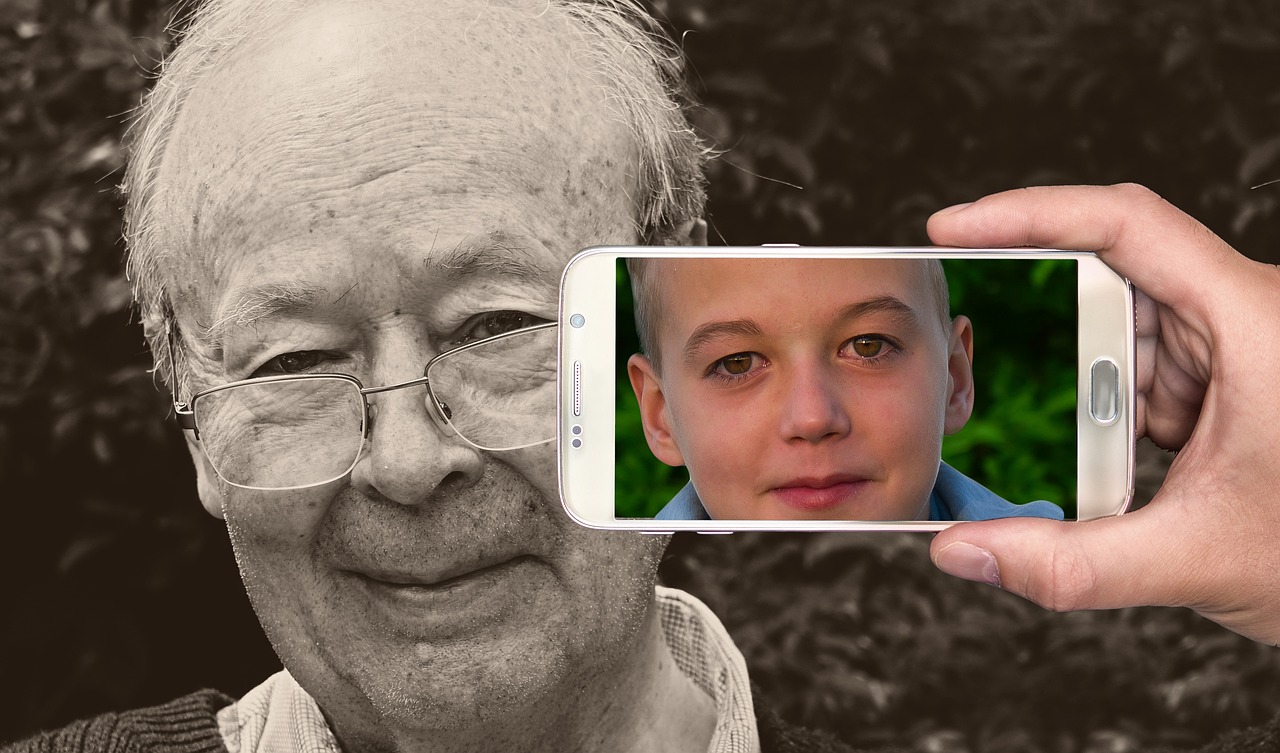
Joint Operations Training
Joint operations training is a critical aspect of modern military strategy, and virtual reality (VR) is revolutionizing how these exercises are conducted. Imagine a scenario where soldiers from different branches of the military can come together, regardless of their physical location, and engage in realistic combat simulations. This is not just a dream; it's a reality made possible by VR technology. By immersing troops in lifelike environments, VR allows them to experience the complexities and challenges of joint operations without the risks associated with live training.
One of the most significant advantages of using VR for joint operations training is the ability to simulate diverse scenarios that require collaboration between various military branches. For instance, a scenario could involve ground troops coordinating with air support to execute a mission. The immersive nature of VR means that soldiers can practice their roles in real-time, making decisions that affect the outcome of the operation. This hands-on experience fosters a deeper understanding of each branch's capabilities and limitations, leading to enhanced cooperation during actual missions.
Furthermore, VR training can be tailored to address specific operational challenges. For example, if a unit is preparing for a joint mission in an urban environment, VR can create a detailed replica of that setting, complete with potential obstacles and threats. Soldiers can practice navigating the terrain, communicating with their teammates, and executing tactical maneuvers, all while receiving immediate feedback on their performance. This level of preparation not only boosts confidence but also improves overall mission effectiveness.
In addition to enhancing tactical skills, VR joint operations training promotes camaraderie and trust among service members. When individuals from different backgrounds and specialties work together in a simulated environment, they build relationships that can translate to better teamwork in real-life situations. As they face challenges together in VR, they learn to rely on one another, which is essential in high-stakes combat scenarios.
To illustrate the impact of VR on joint operations training, consider the following table that outlines key benefits:
| Benefits of VR in Joint Operations Training | Description |
|---|---|
| Enhanced Collaboration | Facilitates teamwork between different military branches through realistic simulations. |
| Risk-Free Environment | Allows soldiers to practice without the dangers associated with live training exercises. |
| Immediate Feedback | Provides real-time analysis of performance, enabling quick adjustments and improvements. |
| Increased Confidence | Prepares soldiers for real-world scenarios, boosting their confidence in their skills and decisions. |
As we look to the future, the integration of VR into joint operations training is only expected to grow. With ongoing advancements in technology, we can anticipate even more sophisticated simulations that will challenge and prepare soldiers for the complexities of modern warfare. This innovative approach not only enhances individual skills but also cultivates a culture of collaboration and trust among military personnel, ultimately leading to more successful missions.
- What is joint operations training? Joint operations training involves collaboration between different military branches to prepare for complex missions that require teamwork and coordination.
- How does VR enhance joint operations training? VR provides realistic simulations that allow soldiers to practice their roles in a safe environment, improving communication, strategy, and collaboration.
- Can VR training replace traditional training methods? While VR training offers unique advantages, it is best used as a complement to traditional training methods, providing a well-rounded approach to military preparedness.
- What are the future prospects for VR in military training? As technology advances, we can expect more immersive and interactive training experiences that will further enhance teamwork and operational efficiency.

After-Action Reviews
After-action reviews (AARs) play a pivotal role in the continuous improvement of military training, especially when integrated with virtual reality (VR) technology. Imagine this: after a high-stakes training session, instead of simply packing up and moving on, teams gather to dissect every moment of their experience. This is where VR shines, allowing participants to revisit scenarios in a controlled environment where they can analyze their actions and decisions in real-time. AARs in VR provide an immersive platform for teams to reflect on their performance, enhancing their learning curve exponentially.
One of the standout features of using VR for AARs is the ability to visualize complex situations from multiple perspectives. Participants can step into the shoes of their teammates, experiencing the challenges and decisions faced by others during the exercise. This not only fosters empathy but also broadens understanding of team dynamics in high-pressure environments. By simulating the exact conditions of the training, VR allows for a detailed breakdown of what went right and what went wrong, leading to valuable insights that can be applied in future operations.
Moreover, the feedback mechanism in VR systems is incredibly robust. Teams can receive immediate, data-driven insights about their performance. For instance, metrics such as communication effectiveness, reaction times, and decision-making processes can be analyzed and visualized in real-time, giving teams a clearer picture of their strengths and weaknesses. This immediate feedback loop is crucial for enhancing learning and adaptation, as it enables soldiers to make quick adjustments and improvements in their training approach.
In addition to visual and analytical benefits, VR AARs also encourage an open dialogue among team members. The immersive environment fosters a safe space where soldiers can discuss their experiences candidly, share their thoughts on what strategies worked or didn’t, and suggest improvements without the fear of judgment. This collaborative approach is essential for building trust and ensuring that every voice is heard, ultimately leading to a more cohesive and effective team.
To summarize, the integration of VR in after-action reviews is a game-changer for military training. It not only enhances the learning experience through realistic simulations and immediate feedback but also promotes a culture of open communication and continuous improvement. As technology continues to evolve, the potential for VR in AARs will undoubtedly expand, paving the way for even more innovative training methodologies that can significantly enhance teamwork and operational efficiency.
- What are after-action reviews (AARs)? AARs are structured reviews of a team's performance following a training exercise, aimed at identifying strengths and areas for improvement.
- How does virtual reality enhance AARs? VR allows teams to revisit training scenarios in an immersive environment, providing valuable insights and immediate feedback on their performance.
- Can VR AARs improve teamwork? Yes, by fostering open communication and empathy among team members, VR AARs help build trust and improve overall team dynamics.
- What metrics can be analyzed during VR AARs? Metrics such as communication effectiveness, reaction times, and decision-making processes can be analyzed to enhance learning and adaptation.

The Future of VR in Combat Training
The future of Virtual Reality (VR) in combat training is not just bright; it’s practically glowing with potential! As technology continues to evolve, the possibilities for VR applications in military training are expanding at an astonishing rate. Imagine a world where soldiers can step into a hyper-realistic digital battlefield, tailored specifically to their training needs. This is not science fiction; it’s the near future of military readiness.
One of the most exciting prospects is the integration of artificial intelligence (AI) with VR systems. By combining these technologies, we can create adaptive training environments that respond in real-time to the actions of the trainees. For instance, if a soldier makes a tactical error during a simulation, the AI could adjust the scenario to present new challenges, forcing them to think on their feet and adapt their strategies. This kind of dynamic training can significantly enhance a soldier's ability to react under pressure.
Moreover, the use of multi-user environments in VR will allow for more comprehensive team training sessions. Soldiers from different units can participate in joint exercises regardless of their physical location. This is particularly crucial in today’s global military landscape, where forces often need to collaborate across vast distances. With VR, troops can engage in synchronized operations, practicing their communication and teamwork skills without the logistical challenges of gathering in one location.
Furthermore, the incorporation of biometric feedback systems into VR training programs can provide invaluable insights into a soldier's physiological responses during high-stress scenarios. By monitoring heart rates, stress levels, and even eye movement, trainers can tailor future exercises to address individual weaknesses. Imagine knowing exactly how a soldier's body reacts under duress and being able to adjust their training accordingly!
As we look to the future, we can also expect to see advancements in haptic feedback technology. This technology allows trainees to feel physical sensations, such as the recoil of a weapon or the impact of a simulated explosion. Such immersive experiences can enhance realism and prepare soldiers for the emotional and physical challenges of real combat. It’s like stepping into a video game, but with the stakes being as real as they get.
In terms of accessibility, VR training systems are becoming more affordable and user-friendly. This democratization of technology means that even smaller military units or allied forces in developing countries can benefit from advanced training methodologies. The goal is to create a universally high standard of military readiness, and VR is a key player in achieving that.
However, with all these advancements, it’s crucial to maintain a focus on ethical considerations. As VR training becomes more immersive, the lines between reality and simulation can blur. Ensuring that soldiers can differentiate between the two and manage their mental health is paramount. Future developments will likely include psychological support systems integrated within VR training, helping soldiers process their experiences and maintain their well-being.
In conclusion, the future of VR in combat training is not just about enhancing skills; it’s about revolutionizing how we prepare our military personnel for the complexities of modern warfare. As we harness the power of technology, the potential for improved teamwork, communication, and operational efficiency is limitless. The battlefield of tomorrow will not only require physical prowess but also a deep understanding of technology and teamwork, and VR will be at the forefront of this evolution.
- What is the primary benefit of using VR in combat training? VR provides a safe and controlled environment where soldiers can practice and improve their skills without the risks associated with live training exercises.
- How does VR enhance teamwork among soldiers? By simulating realistic combat scenarios, VR helps soldiers practice communication and collaboration, essential skills for effective teamwork in high-pressure situations.
- Are there any psychological risks associated with VR training? While VR provides numerous benefits, it's important to monitor soldiers' mental health and ensure they can separate simulated experiences from reality.
- What technological advancements can we expect in the future of VR training? Future developments may include AI integration, biometric feedback systems, and enhanced haptic technology to create even more immersive training experiences.
Frequently Asked Questions
- What is virtual reality (VR) and how does it work?
Virtual reality (VR) is an immersive technology that creates a simulated environment, allowing users to interact within a 3D space. It typically involves the use of VR headsets and controllers that track movements, enabling users to experience and manipulate the virtual world as if they were actually there.
- How does VR enhance teamwork in combat scenarios?
VR enhances teamwork by providing realistic training environments where team members can practice communication and decision-making under pressure. It allows soldiers to experience complex scenarios, fostering collaboration and improving their ability to respond effectively in dynamic situations.
- What are the benefits of using VR in combat training?
The benefits of VR in combat training include:
- Risk-free environments for practice
- Enhanced situational awareness
- Improved communication skills through real-time simulations
- Immediate feedback and analysis for continuous improvement
- Can VR help build trust among team members?
Absolutely! VR can facilitate trust-building exercises that strengthen relationships among team members. By practicing together in a controlled environment, soldiers can develop a deeper understanding of each other’s strengths and weaknesses, leading to improved team dynamics.
- What applications does VR have in military exercises?
VR is increasingly being used in military exercises for:
- Joint operations training between different military branches
- After-action reviews to analyze performance and decisions made during training
- What does the future hold for VR in combat training?
The future of VR in combat training looks promising, with advancements in technology expected to further enhance teamwork and operational efficiency. Innovations may include more realistic simulations, improved feedback mechanisms, and greater integration with other training tools.

